A History of Food in 100 Recipes
A riveting narrative history of food as seen through 100 recipes, from ancient Egyptian bread to modernist cuisine.
We all love to eat, and most people have a favorite ingredient or dish. But how many of us know where our much-loved recipes come from, who invented them, and how they were originally cooked? In A History of Food In 100 Recipes, culinary expert and BBC television personality William Sitwell explores the fascinating history of cuisine from the first cookbook to the first cupcake, from the invention of the sandwich to the rise of food television. A book you can read straight through and also use in the kitchen, A History of Food In 100 Recipes, is a perfect gift for any food lover who has ever wondered about the origins of the methods and recipes we now take for granted.
William Sitwell is the editor of Waitrose Kitchen magazine, can regularly be seen on TV programs such as BBC2’s Food & Drink and Masterchef: The Professionals, and writes about food for a variety of newspapers and magazines. Following an early career in newspapers, he came to prominence in the food world after 1999 when he joined the then titled Waitrose Food Illustrated, of which he became editor in 2002. He subsequently won a string of awards, including “Editor of the Year” in 2005, for the magazine’s writing, stories, design and photography. He spends his spare time growing vegetables, cooking, and making cider at his home in Northamptonshire, England, where he lives with his wife, Laura, and their children, Alice and Albert. This is his first book.
Photo: Simon Brown
When it comes to food books there are countless one devoted to the subject of history. Food writer and television presenter William Sitwell has taken a uniquely different approach to the subject in his new book A History of Food In 100 Recipes. Sitwell has gathered a collection of 100 gastronomic stories spanning the last 4000 years. The stories are a mixture of events, things and people. Some are well known others less so while still others almost entirely lost to the mists of time. The subjects of all these stories have in some way, had a profound effect on what and how we eat today. From the London offices of Waitrose Kitchen, the magazine of which he is the editor, William Sitwell recently spoke to Booksaboutfood.com about his book.
Books About Food(BAF): Was there anything that jumped out at you or took you by surprise as you were doing this research?
Stiwell: We all seem to think that we live in a sort of foodie obsessed age, where big personalities, such as a show busy type food people, are a new phenomenon. The idea of food obsessive is being new is, in fact, nothing new.
I came across an extraordinary man called Archestratus, who was, I think, 4,000 years ago, was travelling through Europe, travelling through Asia Minor, Sicily, and so on, trying to get his hands on as delicious food as he could. He wrote a poem, which there are fragments left, called “The Life of Luxury.” You’ll find it on page 19 of the book.
He records, in ancient Greek, examined his some of his obsession for getting things right, his obsession with sourcing the right honey, eating the right things. He says that if you can’t get a hold of some sugar, he says, “Demand some Attic honey.” He was saying if you want the best honey, you need to get it from Attica. He talked about making sure that you found the best fish from a particular part of the world. He attacked too much sauce poured over everything.
You don’t really have to read in between the lines too much to discover that here was a man obsessed with his subject, who traveled widely to bring his passions to a greater audience. I think there are plenty of those sort of people around today. The first thing I’d say is the characters in food, magnificent personalities, are nothing new.
I think one of the other things I discovered sort of more amusing, really, is the some of the trends in book publishing. Every time I get a new food book that arrives on my desk, the PR tells me, “Here at last, the book, the most authentic. The recipes that finally work.”
I came across a book from, I think it was the early 1800s, called “The Cook’s Oracle,” written by an amazing man called William Kitchiner, where he attacks virtually every other cookbook that’s ever gone before. He has this wonderful quote where he says, “Most of the cookbooks …” He says, ” … were of no more use ‘than reading Robinson Crusoe would enable a sailor to steer safely from England to India.’” He despaired of people handing out vague, recipe instructions and so on.
Then in 1747, there was Hannah Glasse, who wrote a book called “The Art of Cookery Made Plain and Easy.” I write this in the introduction. She says, “Her book far exceeds anything of the kind ever yet published.”
That just really amuses me, that every cookery author thinks that they are producing the definitive, clearest, authentic recipe book.
BAF: You mentioned in the introduction that you were surprised about the writing over the years. It wasn’t anything like you would have expected it to be.
W. Sitwell: Yeah, it was full of color and full of opinion and very verbose. I think, why should this surprise us? Any of us who knows chefs know that they are opinionated, verbose people, aren’t afraid to tell you what they think. Actually, when you start reading the opinions of foodies across the centuries, and you realize that they’ve always been like that, then you think, “Well, why shouldn’t they be?”
There I was, about to sort of delve into what I thought was a pretty dry area of history to discover that actually, food is a subject that raises passions that brings out wonderful characters, great heroes. I came across some extraordinary people in my research, forgotten food heroes, who are championed in the book that I hope people will learn about and enjoying reading about.
BAF: Well, the one who springs to mind, the man who invented the pressure cooker and didn’t get to see the rewards of it.
W. Sitwell: Exactly, Denis Papin. Amazing story. There was this guy who worked for the Irish physicist, Robert Boyle, who invented the famous Boyle’s Law, who in the evenings, out of their laboratory sort of in the east end of London, was making these experiments to try and work out how you could economically produce food, how you could render tough cuts of beef softer. He said that he could make sweets out of it. He said he cold create alcohol that won’t give you a hangover.
He’s doing all these amazing experiments, experiments which he noted down very carefully in this beautiful book called “The Steam Digester or Engine for Softening Bones,” which I held in my hands in the British library. It’s heartbreaking because it’s the most beautifully, passionately produced book. Yet when he presented his findings to the Royal Society, they ignored him. It wasn’t until 10 years after he died a sort of death in poverty that someone else took up his experiments and he made a fortune out of his ‘steam-digester’.
One of my favorite chapters in the book, is about a guy called Thomas Coryat, who in 1608 left London, decided to go on a trip around Europe to discover what was out in the big world. He discovered the umbrella, which he saw people used to shade people from the sun. He wrote about that in his book “Coryat’s Crudities.” His friends laughed at him, said, “That one that’d never take off.”
Then he discovered the fork. He was in this smart, Italian tavern, where he saw these Italians using forks. He wrote about that and his friends laughed at him. They called him ‘furcifer’ which is an old English word for pitchfork. They said, “Oh, these forks, they’ll never take off.” Because of course, the means of getting food into your mouth with knife and bread does not necessitate the use of a fork. The fork is a social nicety. I think there’s a wonderful quote in that chapter, where it talks about some monk in the 18th century, whatever it is, says, “God preserve from forks.” Someone else talks about, “Of course the Italians would use them.” He described them as effeminate Sodomites.
BAF: Those sorts of stories like that are fascinating and they the tie-in well with the recipes.
W. Sitwell: This is not a practical cookbook, so I wasn’t producing something that you can then replicate. I mean, you can try if you wanted to, but I wanted to try and tell the food story using these recipes as the hook. Then if need be, go off at a tangent, but in a way that’s still relevant to what I’m talking about.
I worked hard to find contemporaneous recipes that enabled me to then tell a story about a particular time. I think a history of food has to include an omelet, but I use, the omelet to write about who I believe is the first sort of TV chef. Likewise there’s a recipe for chocolate cake, which appears in, I think, the early 19th centaury.
Actually, the recipe is not about chocolate. It’s about the story of Piggly Wiggly. I argue that it’s justified because Piggly Wiggly enabled people to be exposed to brands.
Walter Baker was flogging his chocolate by using recipes. That recipe enables me to tell the story of the growth in brands, the growth of consumers, and growth of marketing, and the development of the supermarket. It was a kind of neat way of being able to do it.
There are some chapters, I can’t find a recipe and I sort of struggle, so I do as damned hard as I can to get as close to one.
BAF: How did you cull your choices down because there’s always going to be people that tell you, “You left this person out or that person?”
W. Sitwell: It was really a toss-up between myself and my researcher. We basically sat down and thought, “Okay. What are the most important moments in history, in food history, that we need to cover and that we can cover in a way that is fun to read, accessible, and drives the story on?”
BAF: Touching briefly on your research, how did you go about it?
W. Sitwell: Well, I spent a lot of time in the British library, which is this brilliant institution in London, where they have virtually a copy of every book ever published, as well as very ancient manuscripts. It’s amazing what you can dig out of there. I found the first ever recipe using a tomato from Antonio Latini’s book, I think, 1692, Lo scalco alla moderna sauce in the Spanish Style. That came out of hours of painstakingly turning page and trying to look for the word “pomodoro” till I finally found it.
I did most of it from London or from my study in my house in England, and made a few trips. It was basically pouring over books and manuscripts. Then also looking over tapes and reading biographies. More recently, looking at various personalities that shaped our world, looking through articles they’ve done, interviews they’ve given. It’s amazing what you can find on YouTube these days.
I would interview the people who are still alive as much as I could. Most of the people I quote by interview. Thomas Keller, for example, I met him and interviewed him in Knightsbridge. As much as possible, I try to get to the people who I was writing about. Each person, I’m trying to set in the period in which they lived or made a difference. I worked quite hard to find quotes from them, spoken at the time, rather than just reflecting back years later because I wanted people to hear the voices of people. What was Alice Waters saying and thinking the day after she first opened Chez Panisse? What was the spirit? That, to me, was quite important, rather than just finding retrospective interviews 30, 40 years later.
BAF: Roughly, how long did the writing process take?
W. Sitwell: The process of writing was actually about six months, so pretty quick, to be honest. I spent a lot of time walking around the peripheries of the book, trying to work out what it should be, which funny enough, it was going to be a sort of a book of essays about foodie subjects over time.
Because originally, we were thinking, well, we should try and make all these recipes work, translate them, and we decided we don’t need to do that. This is not space practicality. It’s about enjoyment and also reading a recipe in exactly the same way as it would’ve been read at the time. That’s what, I think, is entertaining, especially some of these sort of ancient English recipes. Read them out aloud, hear the voice, hear the sound that they made when they were originally written or spoken.
Booksaboutfood.com © 2013
What a splendid book: it manages to be a recipe collection, a history of cooking and, in passing, a history of the world all at once.
-Tom Standage, author of A History of the World in 6 Glasses and An Edible History of Humanity
Sitwell is without doubt one of the great food writers of our day. Every serious cook should read this book at least once.
-Marco Pierre White
Almost every sentence of his scrupulously researched and breezily confident book oozes with a passion for eating…what it has over all its predecessors is structural as well as stylish: a pick-up-and-smile quality.
-The Times
William Sitwell has pulled off something clever: a thoroughly researched and witty history that is both compelling and teeming with scholarly facts…you don’t even need to be a raging foodie to enjoy this.
-The Observer
Ancient Egyptian bread
—–
author: Unknown, from: The wall of Senet’s tomb, Luxor, Egypt
Crush the grain with sticks in a wooden container. Pass the crushed grain through a sieve to remove the husks. Using a grindstone, crush the grain still finer until you have a heap of white flour. Mix the flour with enough water to form a soft dough. Knead the dough in large jars, either by hand or by treading on it gently. Tear off pieces of the kneaded dough and shape into rounds. Either cook directly on a bed of hot ashes or place in moulds and set on a copper griddle over the hearth. Be attentive while cooking: once the bottom of the bread starts to brown, turn over and cook the other side.
—–
On the hot, dusty sides of the hill of Sheikh Abd el-Qurna, overlooking the Nile valley near the ancient city of Thebes — now Luxor — you’ll find the discreet and humble entrance to the tomb of Senet. Carved into the limestone mountain, it is one of hundreds of burial chambers in the area. The tombs were the funerary resting places of the nobles, officials who wielded power under the pharoahs in ancient Egypt.
Painted onto the walls of their tombs are scenes from daily existence that they wished to be replicated in the afterlife. So everything that was pleasant — happy memories, experiences and rituals — is recorded in detail, giving us a clear picture of everyday life 4,000 years ago. There are scenes of hunting, fishing, the harvesting of crops and grapes, feasting and general rural life.
Almost all of the tombs were for men, but Theban tomb number TT60 is the resting place of Senet. Hers is both the only known tomb for a woman dating from the Egyptian Middle Kingdom period, between 2055 and 1650, and the oldest burial chamber whose decorated walls have survived in good order. In addition to images of hunting, plowing and sowing, there are depictions of bread-making. These are so detailed and colorful that those who have seen the wall paintings attest to their overwhelming power. “We are,” wrote Egyptologist Thierry Benderitter on viewing them in the 1970s, “in the presence of the exceptional representations of actual cooking in the Middle Kingdom.”
But who was Senet herself? It appears that she was either the wife or mother of Antefoqer, a vizier — the most senior of men who stood between the pharaoh and his subjects — who served both King Amenemhat I and then his son Sesostris I at the start of the Twelfth Dynasty, between 1958 and 1913 bc. That she was accorded her own hypogeum, or private underground tomb, attests to Antefoqer’s importance. Yet the entrance today has no majesty. Less grand than others on the same hill, it now has a brick entrance with a simple wooden door added in 1914 by the English Egyptologist Norman Davies.
Only very few tombs are open to the public. This one is rarely visited — entry being highly restricted — and photography is banned to prevent light damage to the wall paintings. Those permitted access must first maneuver past the endless rubble that surrounds the entrance before removing a pile of stones that frequently blocks the actual door in a crude but effective form of security. Once opened, the door reveals a long, narrow and bleak passageway extending into the tomb, its roof descending in height and adding to a sense of compression. The passage leads to a dusty square chamber where there’s a statue of Senet herself, seated; a reconstruction, the sculpture having been found completely fragmented.
Beyond the chamber is another long passageway, but this one is bright with paintings, in colors of ocher, yellow, red and blue. The eye is drawn first to an image of Antefoqer hunting, posing majestically in a simple loincloth, his bow fully extended. Around his neck is an elaborate necklace of blue, green and white, while his wrists are adorned with matching bracelets.
There are images of greyhounds, hippos and beautifully drawn birds: geese, ducks and flamingos in a bright, sky-blue background. Gazelles and hares are chased by dogs. Birds are netted and fish — so detailed you can tell their variety — are hauled in from a pond. And then halfway down the 20-meter passage, on the right, are scenes of cooking.
There is meat preparation, for instance. Under the cooling protection of an awning, men butcher an ox. They hang pieces of meat on ropes, while others out in the sun tenderize it, tapping it with stones. To their right a man adds a bone to a cauldron of soup with one hand while stirring it with a stick in the other. Another roasts poultry on a skewer over a raised grill, while encouraging the embers with a mezzaluna-shaped fan. It is a hive of activity.
As is a precisely drawn recipe for bread-making, summarized at the top of this chapter. The images were not of course intended to instruct the household cook, but to help the departed soul have some decent, freshly baked bread in the afterlife. Yet it is a foundation that has informed bread-making for thousands of years.
The images not only show how flour is prepared from grain, they also record some chatting (deciphered from hieroglyphs) between the characters, painted near some of their heads like speech bubbles. First, two men crush the grain in a wooden container. “Down!” one orders as another replies, “I do as you wish.” Next a woman passes the grain through a sieve to remove the husks, while her female companion grinds the grain even finer using a grindstone. In another image a girl kneads small rolls of dough in her hands, while another adds thin lines of it to some tall conical molds. Behind the girl a man can be seen placing the conical containers into an oven. He pokes the embers with one hand while protecting his face from the heat with another. But he’s not happy with the state of the logs. “This firewood is green,” he moans.


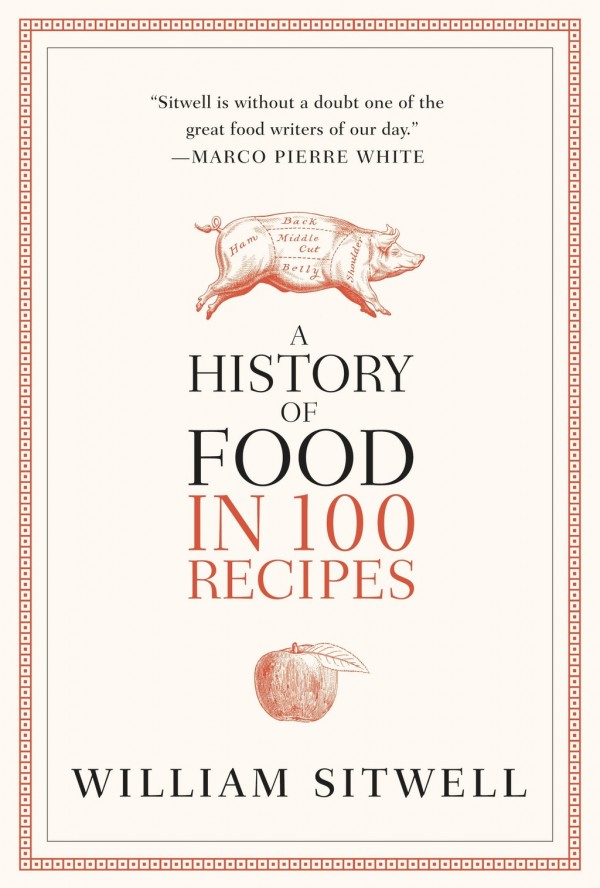




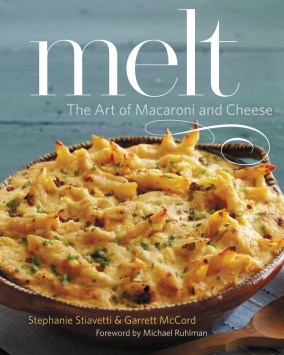

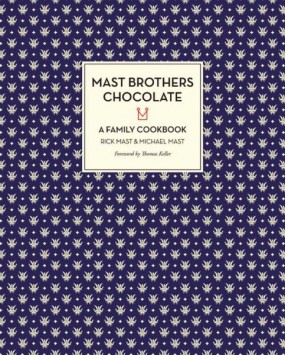
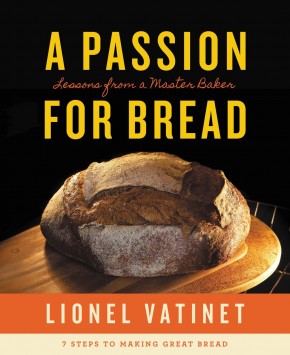
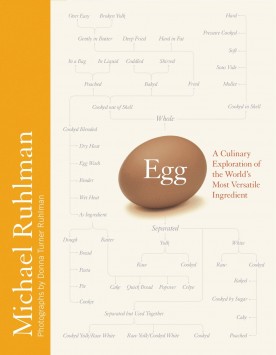
Leave a Reply